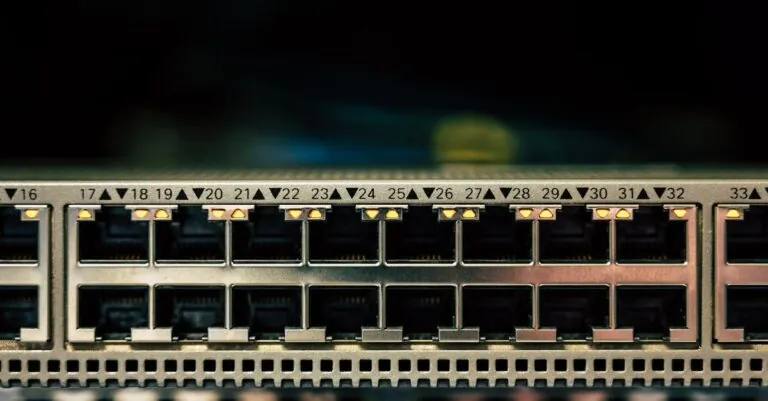In a world overflowing with pictures of cats in hats and food art that deserves a gallery, how does one make sense of it all? Enter deep learning for image recognition—the superhero of the digital age. This cutting-edge technology doesn’t just identify images; it understands them, making it possible to sort through the visual chaos like a pro.
Overview Of Deep Learning For Image Recognition
Deep learning utilizes algorithms mimicking the human brain’s structure, known as neural networks. These networks process vast quantities of data, making them adept at recognizing patterns in images. CNNs, or convolutional neural networks, form the backbone of most image recognition tasks. They excel at extracting features and performing classifications, enabling applications in areas such as autonomous driving and facial recognition.
Training deep learning models requires large datasets, often on the scale of millions of labeled images. Data annotation involves tagging images with relevant labels, providing models with context for learning. The introduction of transfer learning allows practitioners to leverage pre-trained models, significantly reducing the time and resources needed for training.
Computer vision tasks benefit immensely from deep learning strategies. Object detection, for instance, locates and classifies multiple entities within an image, generating bounding boxes around them. Segmentation further refines this process by delineating object boundaries, creating pixel-level precision crucial for applications like medical imaging.
Performance metrics such as accuracy, precision, and recall evaluate model effectiveness. Numerous benchmarks exist, including ImageNet, a large-scale dataset that has become a standard for image classification tasks. Continuous advancements within deep learning frameworks, such as TensorFlow and PyTorch, facilitate innovative model development and deployment.
The importance of deep learning in image recognition continues to grow. As the demand for smart technology increases, the applications of this technology span across various fields. Automation in industries like retail and security showcases its potential to transform how visual content is utilized and analyzed.
Key Components Of Deep Learning
Deep learning relies on several crucial components that enable advanced image recognition capabilities. Understanding these components is essential for grasping how deep learning interprets visual data.
Neural Networks
Neural networks form the foundation of deep learning. This mathematical model consists of interconnected nodes or neurons that process information. Each neuron receives inputs, applies weights, and activates based on a nonlinear function. Multiple layers of these neurons contribute to complex decision-making processes. Activation functions determine how the outputted signal interacts with other neurons, allowing for effective pattern recognition. The training of neural networks involves adjusting these weights through backpropagation, optimizing the model’s accuracy over time. Consequently, neural networks are vital in developing intelligent systems capable of recognizing and understanding images.
Convolutional Neural Networks (CNNs)
Convolutional neural networks serve as specialized structures within the broader category of neural networks. These architectures excel at processing grid-like data, such as images, through convolutional layers. Each convolutional layer applies various filters to extract essential features from input images. Pooling layers further reduce the dimensionality of the data, enhancing computational efficiency. A typical CNN consists of multiple convolutional and pooling layers, followed by fully connected layers that perform the final classification. This hierarchical approach enables CNNs to capture both low-level and high-level features effectively. Applications of CNNs span across diverse sectors like automotive technology, facial recognition, and medical imaging diagnostics.
Applications Of Deep Learning In Image Recognition
Deep learning significantly enhances image recognition across various sectors. Its applications extend far beyond simple identification, impacting fields like healthcare and automotive technology.
Medical Imaging
Medical imaging benefits from deep learning through improved diagnosis accuracy. Techniques like image segmentation enable precise identification of tumors and lesions in scans. Algorithms trained on vast datasets of labeled images recognize patterns that human eyes might miss. Radiologists can rely on deep learning models to assist, increasing efficiency in interpreting X-rays and MRIs. Research indicates that these models achieve higher accuracy rates than traditional methods, leading to better patient outcomes and faster diagnoses.
Self-Driving Cars
Self-driving cars rely on deep learning for real-time image recognition and decision-making. Convolutional neural networks process input from various sensors, identifying obstacles, road signs, and other vehicles. These networks continuously learn from vast amounts of driving data, enhancing their ability to navigate complex environments. The technology transforms how cars perceive their surroundings, significantly improving safety and reliability. Furthermore, continuous advancements in deep learning models keep pushing the boundaries of autonomous driving capabilities.
Challenges In Deep Learning For Image Recognition
Deep learning for image recognition faces several challenges that impact its effectiveness and efficiency.
Data Requirements
Large datasets of labeled images are crucial for training deep learning models. Curated data significantly enhances model accuracy and generalization. Data scarcity affects performance, especially in niche applications where acquiring diverse images isn’t easy. Furthermore, labeling data can be a labor-intensive process, requiring considerable time and expert guidance. Variability in image quality and diversity can introduce bias in training, leading to overfitting. Ensuring data represents various scenarios and conditions is essential for robust model performance.
Computational Resources
Training deep learning models necessitates substantial computational resources. High-performance GPUs are typically required to handle complex calculations efficiently. Scalability stands as a key concern when models require larger datasets, leading to increased training times. Because model architecture complexity tends to rise with performance expectations, resource allocation becomes more critical. Moreover, energy consumption during training can be significant, creating added operational costs. Ensuring access to adequate infrastructure is vital to address these computational challenges effectively.
Future Trends In Deep Learning For Image Recognition
Growing interest in deep learning continues to push the boundaries of image recognition technology. Enhanced algorithms, like transformer models, are poised to improve accuracy and efficiency in visual data processing. Adopting unsupervised and semi-supervised learning techniques can alleviate the heavy dependency on labeled datasets, addressing the challenge of data scarcity.
A shift towards edge computing is also on the horizon. Placing processing capabilities closer to the data source, such as cameras, reduces latency and optimizes real-time applications in areas like surveillance and retail. A focus on energy-efficient models will facilitate broader adoption, especially in mobile devices.
Rapid advancements in generative models present another exciting trend. Generative Adversarial Networks (GANs) and similar architectures enable not only image recognition but also the creation of realistic images, enhancing training datasets and enriching model performance. This capability proves crucial in fields where high-quality data is hard to obtain.
The integration of multimodal learning is another key development. By combining information from text, audio, and images, models can achieve a more holistic understanding of content, enhancing applications like content moderation and search engines. Companies aiming to improve user experience will likely prioritize these advancements.
Finally, regulatory considerations around privacy and ethical AI use increasingly shape the landscape. Organizations will need to navigate these challenges while innovating, ensuring compliance with guidelines. Thus, the future for deep learning in image recognition stands at the intersection of innovation, efficiency, and responsibility.
The advancements in deep learning for image recognition are reshaping industries and enhancing the way visual content is processed. With the ability to identify and understand images through sophisticated neural networks, applications are becoming more efficient and impactful.
As technology evolves the integration of new algorithms and learning techniques promises to address existing challenges while improving accuracy and reducing resource demands. The future holds immense potential for deep learning to revolutionize areas such as healthcare and autonomous driving, making it crucial to navigate ethical considerations alongside technological growth.
Embracing these innovations will not only transform image recognition but also redefine how society interacts with visual data in everyday life.






